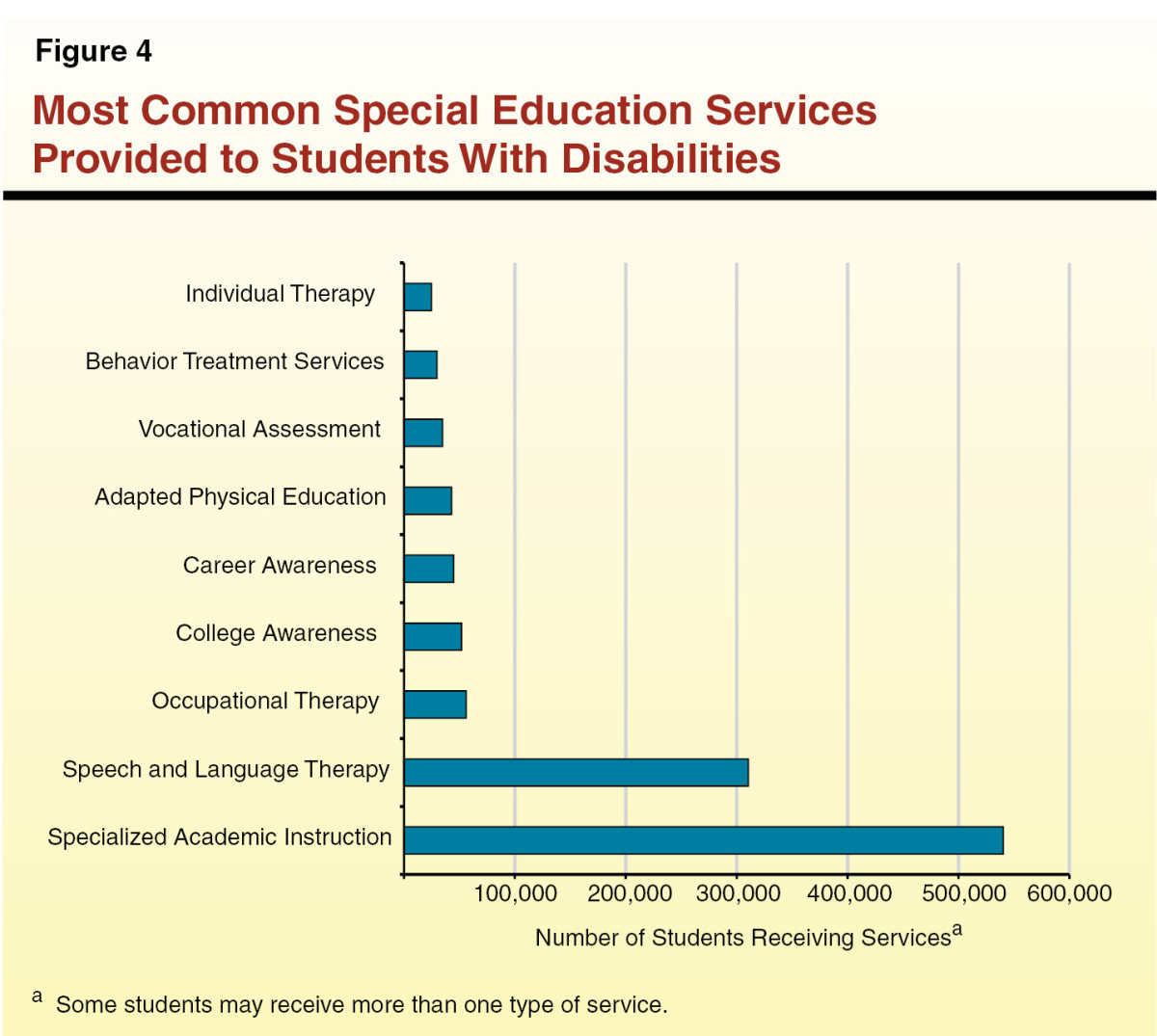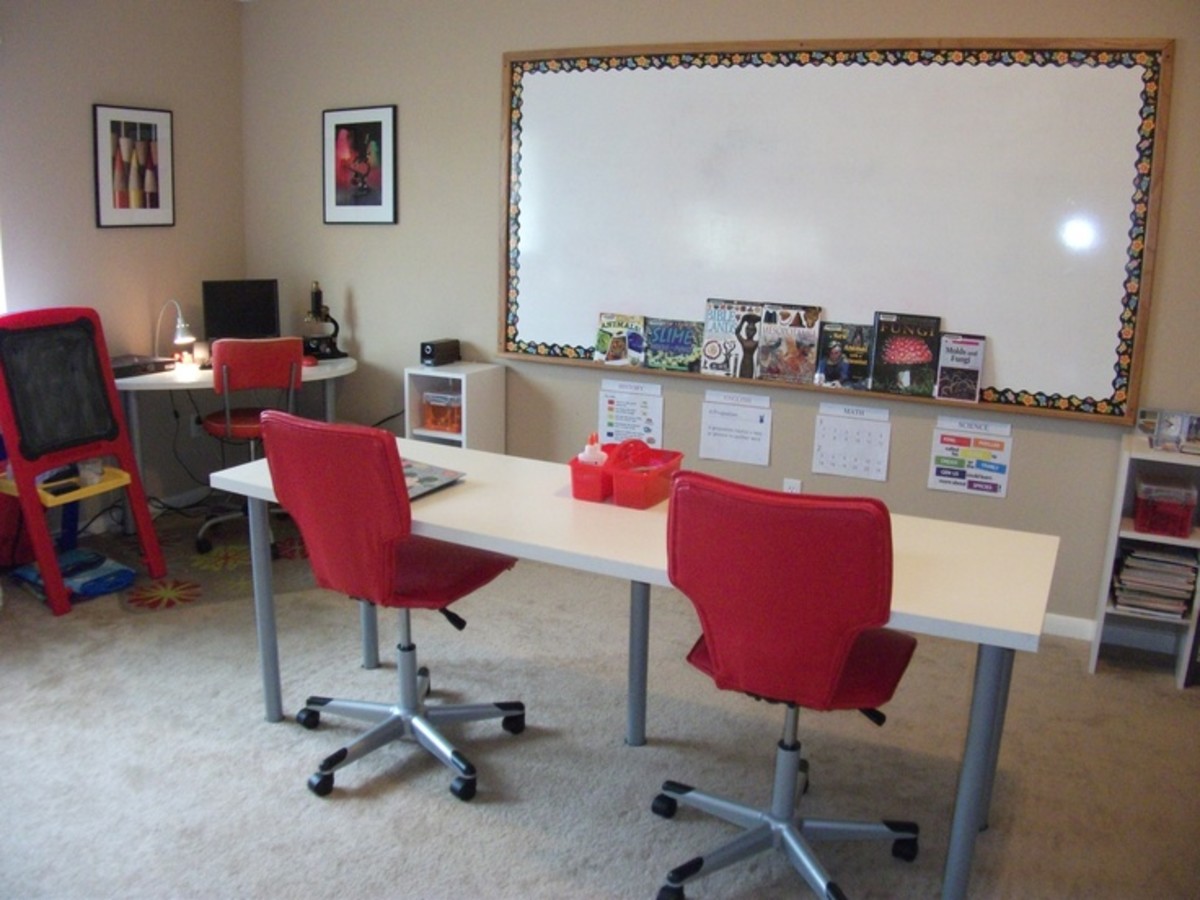Inclusion in the Classroom: Learning Together
Inclusion classrooms are rewarding for all children. Numerous school systems today are implementing inclusion in the classrooms because of the numerous benefits associated with inclusion. Even though inclusion may not be for every student with a disability, there are countless benefits of inclusion to consider. In 1975, the Education for All Handicapped Children Act was passed to guarantee that children with disabilities be given the opportunity to receive a public education ("A Brief History of the Disability Rights Movement", n.d.,). In 1990, 1997, and 2004, reauthorizations of this Act were held, and the law came to be known as the Individuals with Disabilities Education Act (IDEA). IDEA mandates that not only should individuals with disabilities be offered a public education, they also have the right to learn in the least restricted environment. Therefore, students with disabilities, both in public and in private schools, are to be educated to the maximum extent possible, and in classrooms together with students with no disabilities. Children with disabilities are, most importantlyimportantly, children. Inclusion supplies opportunities for socializing and for friendships to grow. It offers a feeling of belonging and the appropriate encouragement of social, behavioral, and academic skills (Karagiannis, Stainback, and Stainback 28). Including children with disabilities in general education classes generates acceptance of diversity. It teaches children how to connect with others of different capabilities. Inclusion continues to be a debatable idea in education as it pertains to educational and social values, as well as to the sense of individual worth. There are supporters on both sides of the issue. The Individuals with Disabilities Education Act (IDEA) is a highly effective law, ensuring that every child will be given an optimal education. Because of IDEA, Department of Education is expected to establish the most effective atmosphere for children with disabilities to learn and succeed. For most, this can cause a referral from the Board of Education that the child be included in an inclusion classroom. Inclusion classes are composed of typically developing children along with children with disabilities who have individual education plans (IEPs). Inclusion classes are characterized as being the least restrictive conditions and represent the most ideal placement method of the Board of Education. While this setting may not be right for every child who has a disability, this setting can work wonders for many children with special needs as well as their peers.
Over the past 20 years, researchers have evaluated the attitudes of a wide array of professionals towards those with disabilities. Even though numerous researchers have found that people generally have unfavorable attitudes towards those with disabilities (Gething, LaCour, & Wheeler, 1994) a great deal of the research offered reviews of only one group of individuals to the other without distinguishing attitudes as positive or negative. In regards to school counselors and educators, minimal research has been done during the past 10 years, and most of that research has concentrated on teachers and/or has analyzed attitudes towards inclusion, as compared to attitudes exclusively toward students with disabilities. Throughout the years, perceptions regarding disability have varied considerably from one community to another. In regards to education, perceptions regarding children and adults with disabilities have improved drastically. The greatest obstacle in education today, according to (Birch and Johnstone 1975), is guaranteeing that all schools are as convenient and thoroughly available to persons with disabilities. From every point of view, regardless of whether that be human rights, economic efficiency, or social desirability, the national interests ought to be to serve children with disabilities equally with all other children.
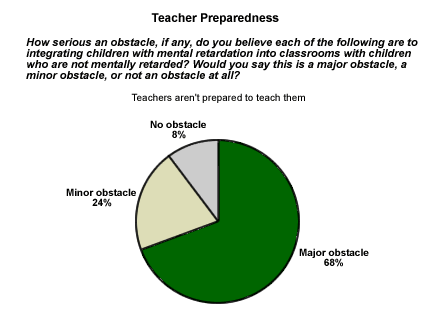
Inclusion is a common method for educating children with disabilities. Inclusion is a different term for "mainstreaming," or blending special education with traditional education classes. The objective of inclusion is for all children with disabilities to participate in "typical" schools and classrooms and obtain the assistance they need to be successful.
The inclusion method has a lot of attraction. It provides children with special needs the chance to learn in nature, challenging environments. Inclusion provides the possibility for friendships to develop with non-handicapped peers, offers positive role models, and often leads to an increased acceptance in the community. Furthermore, children without disabilities may benefit by learning about differences between people and by having the opportunities to help others. Teachers may benefit by acquiring a wider understanding of differences and by learning new skills for teaching. Countless children have achieved positive results from being included in their public schools. Nevertheless, after more than 10 years of inclusion, the primary goal has still not been met. Because inclusion is a viewpoint regarding how children ought to be educated, it is occasionally suggested without prioritizing the needs of the individual child or personal preferences of the family. The location where a child is educated does not make instruction efficient. Rather, it is the material and the strategy of instruction that are most likely to result in the progress of the child's speech, social skills, and other behaviors. Public schools are occasionally incapable of providing the specific education necessary for children with autism, or those with severe language and behavior conditions. It is unlikely to expect that regular education teachers will always have the special training required for this population, or be able to quickly adjust to the school's curriculum. Additionally, children with special needs are often times assigned one-to-one aides who have minimal training or knowledge pertaining to autism and other developmental disabilities.
When students in general education and special education share a classroom, it is essential their teacher develop a setting that brings forth the strengths of each child. There are characteristics of how a successful inclusive classroom should look. Each of the current inclusion models is intended to provide the most ideal environment for each child, but each model will have advantages and disadvantages. Some of these models include a full-inclusion model which students with special needs are assigned to specific programs and/or classes as identified by an assessment team. Full-inclusion was developed and expected to fulfill all of the academic needs of the Special Education child in the regular education classroom. For a child placed in a full-inclusion program, academic and social proficiency is the goal for everyone involved. Another example is the inclusionary team teaching In this model both the regular education teacher and the special education teacher work together and teach in one classroom. Teachers must become equal partners who must have exceptionally developed communication and collaboration skills to be efficient. In this model students will spend a part of their day in a special education classroom and the other part of their day in a regular education classroom with peers. The inclusion may be for academic instructions in a particular area or for social skills development. The positive side to each of these models is they will become a component of the school's programs and through visibility, students will grow to be accustomed to interacting with each other. On the down side, there can be a lack of awareness of what the each of the models will mean for the general program. Another possible disadvantage of these models there is a fairly high learning curve as a result of the accelerated change to the school's overall program.
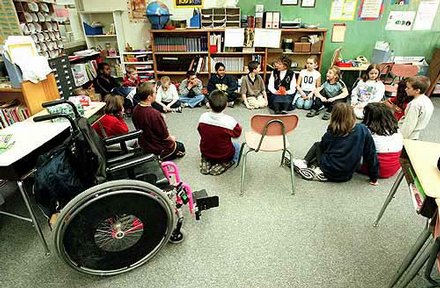
After decades of research and legislation, special education now offers services to a very wide range of students with different levels and types of disabilities. In an inclusion classroom, disabilities can range from speech delays, speech-language disabilities, emotion disabilities, impaired hearing and deafness, vision disabilities and blindness, autism. The disabilities can range from very acute to very severe. Some children will also have multiple disabilities. In order for inclusion in the classroom to work for the various forms and levels of disabilities, there needs to be guidelines and common practices. Students with disabilities have the right to an education that can be easily attained and in the most appropriate environment. The move toward a better learning environment for every student should be the final goal for every student with all types of disabilities. Therefore it is crucial that the schools change to work for all students. Children with both physical and cognitive disabilities need to be provided adaptive equipment they need, and most importantly, accessibility to specially trained staff, sufficient learning materials, and adjustments that allow students the chance to achieve success in an inclusion environment.
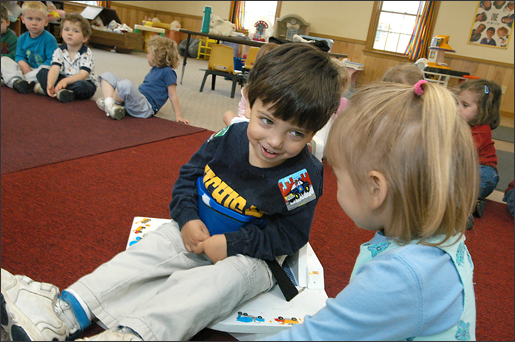
Public school systems must ensure access to programs, services, and activities are functional and accessible by those with disabilities. Insuring program accessibility is a significant element of improving opportunities for people with disabilities. Federal regulations incorporate two requirements to be utilized in determining whether a school's programs, activities, and services are accessible to individuals with disabilities. One requirement addresses new construction and modifications; the other deals with current facilities. Effective utilization of any type of program is dependent on assistance from administrators and collaborative initiatives from school staff. Schools need to make time to evaluate their perceptions and thinking about students with disabilities, as well as current guidelines and practices. Students are wise to the thinking of school personnel, even when the thinking is not said out loud. Educators should demonstrate commitment, optimism, and confidence so that students do not restrict their goals.
The collaboration between parents and educators towards improving inclusive procedures is a crucial element in the success of inclusion classrooms. An significant part creating an inclusive classroom is to build a collaborative within a community consisting of educators, and parents that encourage each other in furthering inclusion. The parents acceptance and interest of children with special plays a crucial role to level of acceptance and participation by the community. Additionally, children with disabilities who are educated in general education settings have been discovered to score higher in literacy than students in segregated settings. Top quality inclusive education does not simply appear. Educating children with disabilities in general education settings with access to the general education curriculum involves detailed planning and preparation. Today, education is possibly the most significant function of state and local government, it is a key application in awakening the child to social values, in preparing the child for later professional training, and in helping to adjust normally to their environment. Research shows that school officials, parents and community members must all be engaged and devoted in the successful outcomes of inclusive education. Teachers - both general and special education - must work together to develop learning strategies that work for all students.
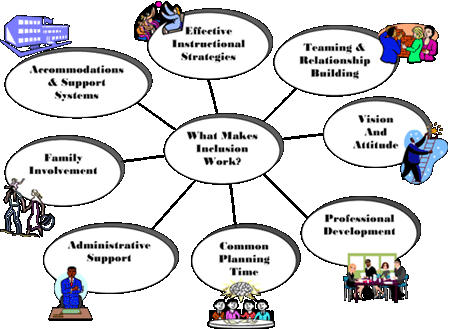
Teachers are being urged to assist students build collaborative relationships, and studies evaluating student behavior towards their peers with disabilities has indicated that contact with students with disabilities may result in valuable behavior. As a result, student relationships appear to be a significant objective, and organized activities have been suggested regarding assisting students build skills to effectively communicate with one another. Teachers are being urged to assist students build collaborative relationships, and studies evaluating student behavior towards their peers with disabilities has indicated that contact with students with disabilities may result in valuable behavior.
The forms of educational techniques seen in inclusive classrooms, such as peer tutoring, collaborative learning groups, and separated instruction, have been suggested to be effective to all students. Peer tutoring lead to immense improvements in spelling, social studies and other academic aspects for students with and without disabilities. Students with various disabilities might need modifications to their classwork or homework. Potential methods for adjusting these kinds of services consist of pairing or grouping students with various disabilities with other students who can compensate, providing students additional time to finish classwork if at all possible, decreasing the length of assignments for students who are unable to finish the entire task, and letting some students to exhibit their competence via spoken responses instead of written ones.
Inclusion is frequently considered to be the most suitable choice for students with disabilities, but the practice may not actually have the best long term outcomes.
The objective of education should be to assist children in reaching their full potential and grow into thriving members of society. There are sports, clubs, and other non-academic activities that help children become well rounded and more receptive to learning. If the needs of all children are significant, they are equally significant to the children with disabilities as well. Teachers cannot be required to completely change their teaching method and delivery to accommodate all these newcomer students. It is a reality that special needs children, and for example, autistic children cannot learn in the same manner as children without disabilities. School's cannot be expected change entire curriculums and teaching styles. Children with disabilities have greater needs than children without. Solid foundations of support are necessary for these children .Not only one on one support in the classroom, but strategies, tools and dedication are required. For example, teaching autistic children demands professional training - and autistic specialists are rare. General education teachers are not experts in the field of autism, or any other disability. The issue is, every child is different. Teachers are expected to teach the whole ability range, distinguishing where necessary and changing to the massive range of social and emotional needs in class. Research now shows that children with very severe disabilities and educational needs are in fact more negatively affected from inclusion classrooms than special education classrooms. In the general education classroom, they are being taught in larger sized classes by teachers who are oftentimes not prepared to manage their demands. Teachers cannot be required to completely change their teaching method and delivery to accommodate all these newcomer students. It is a reality that special needs children, and for example, autistic children cannot learn in the same manner as children without disabilities. School's cannot be expected change entire curriculums and teaching styles. Children with disabilities have greater needs than children without. Solid foundations of support are necessary for these children .Not only one on one support in the classroom, but strategies, tools and dedication are required. For example, teaching autistic children demands professional training - and autistic specialists are rare. General education teachers are not experts in the field of autism, or any other disability. The issue is, every child is different. Teachers are expected to teach the whole ability range, distinguishing where necessary and changing to the massive range of social and emotional needs in class. Research now shows that children with very severe disabilities and educational needs are in fact more negatively affected from inclusion classrooms than special education classrooms. In the general education classroom, they are being taught in larger sized classes by teachers who are oftentimes not prepared to manage their demands. A case-by-case approach is the most effective way of making decisions about student education and placement. Rigorous and moderately individual teaching, close collaboration between general and special education teachers, and attentive, consistent tracking of student progress are essential.
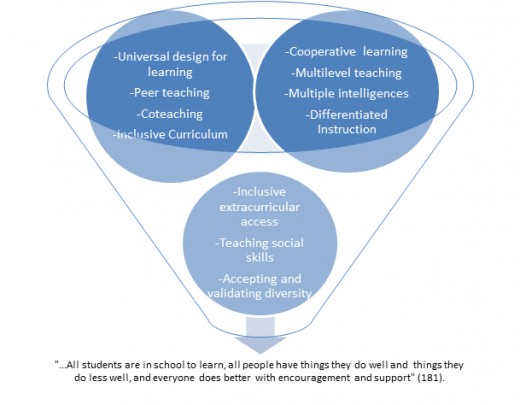
Inclusion is a continuous process. The process to becoming an Inclusive School may perhaps be lengthy and demanding at times, but ultimately this process will enhance a school and the community so that all children will benefit. The process of inclusion must include essential improvement in just how a school assists and handles the individual needs of each child. For inclusion to be successful, there must be a total collaboration between school officials, parents, and the community. While there are drawbacks and disadvantages, an inclusion classroom, if done correctly will have more advantages than disadvantages. Successful inclusion will benefit not only school officials, and participants, but the community as a whole can be facilitated. It is essential to note, that inclusive service will be varied at each location, but this does not define the strength of services. Successful inclusion services demand team work, education, and structure. Developing a platform, however is only laying a base for true inclusion to develop. True inclusion must become a benefit which is shared by all those involved. Inclusion will develop on its own. Successful inclusion cannot be forced or utilized only because it is required by law.
It has been established that Inclusion involves leadership for distributed control, multilevel teaching, an curriculum and staffing plan motivated by student needs with secured time for teacher cooperation. When all of these factors are successfully in place, collaboration will blossom into a shared instruction and ownership for the progress of students. Undoubtedly Inclusion is complicated and challenging work. Furthermore, it is believed that schools cannot make sufficient improvements with each and every one of the students without Inclusion. School systems that have adopted the process of inclusion have seen the positive results in both the staff and student bodies. Schools need to take a closer look into their practice, possibly with fellow workers build the next phase or support system for students. The entire faculty needs to work in hopes of achieving the same goal. If it is truly believed that all children can learn, then strategies and teaching need to reflect this belief The only way to ensure, and also continue toward improvement for each student is by leading; building, uphold and maintain a method by which school officials, parents and students work together to increase success for every student.


